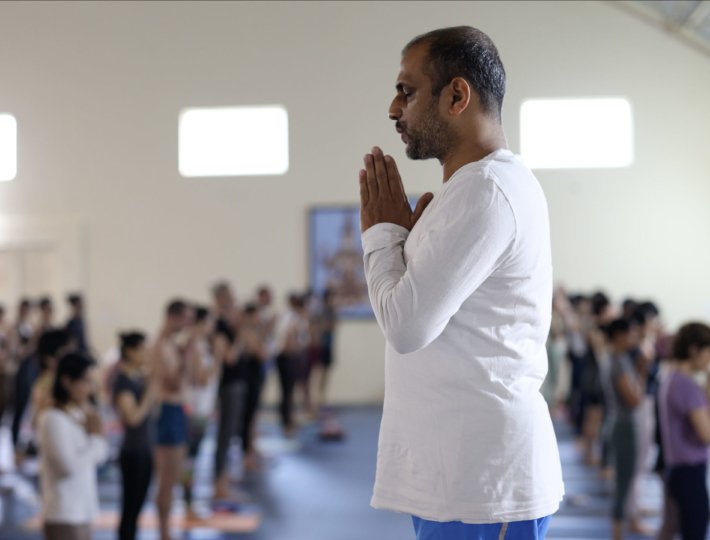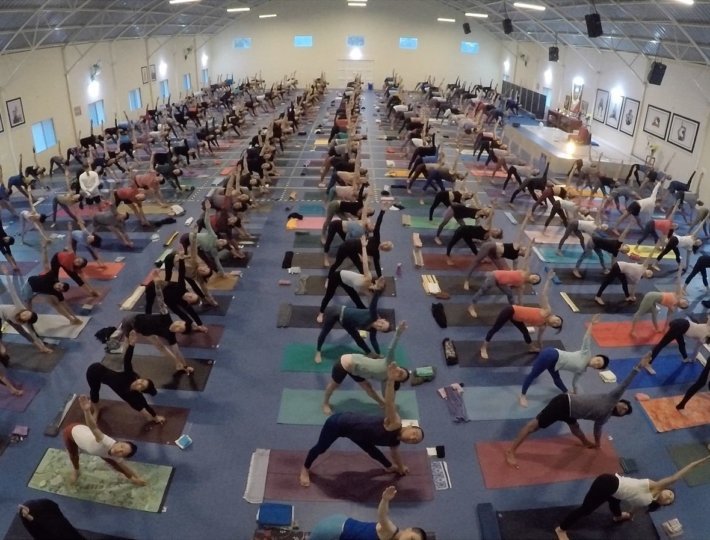Between ever-growing political divides and the urge to shrink into our smartphones, we live in a time of increasing divisiveness and isolation. Cue the latest in Buddhist advice for living a more meaningful life from Sakyong Mipham Rinpoche, head of the Shambhala tradition and author of the new book, The Lost Art of Good Conversation: A Mindful Way to Connect with Others and Enrich Everyday Life, released in October.
This masterpiece is sure to be a game-changer in today’s aggressive and disconnected world. In it, the Sakyong invites you to forget about internet trolls and news alerts, and instead connect to the present moment, engage with others authentically, and create interactions that you feel good about. How does one do this? Here are four insights from this inspiring book to help you get started.
1. “Mindfulness is the act of noticing. It is not engaging in like or dislike; it is paying attention to being alive.”
As a long-time meditation teacher, it’s no surprise the Sakyong encourages us to practice meditation as a means to create more authentic conversations. That said, he takes the practice off the cushion and brings the principle of mindfulness to life by showing us that through paying attention, we can create genuine connections. Through showing up fully and genuinely for a conversation—with whoever is right in front of us—we end up feeling our humanity.
2. “When we walk up to the checkout counter at the convenience store, we may not even acknowledge the person working the register. We just hand them our credit card without making eye contact or saying hello. In our modern world, this has become the norm. If we do say ‘hello,’ the person might be surprised that we are acknowledging their existence. This lack of courtesy affects our society as a whole. Thus, simply saying ‘hello’ is a meaningful and mindful endeavor.”
The Sakyong takes us through ways to further connect with those people in our lives who we like, how to find common ground with those we don’t, and perhaps most importantly, how to rouse ourselves out of isolation and forge on-the-spot connections with people we don’t know at all.
Building off of the aforementioned quote, if we are present, we begin to notice the people around us more. We see that they struggle in the same ways we do. This is where mindfulness gives birth to compassion. While saying “hello” seems like such a minor thing to really acknowledge that person working the register, the neighbor who lives down the hall from you, or the new colleague at your office is a pure act of kindness.
We are inviting someone to form a moment of connection with us. It may not always go the way we hope. We may not become instant life-long friends. But we are acknowledging our shared humanity and that goes a long way for most people. The Sakyong goes on to say, “And this is the key to conversation: To appreciate the one in front of you, which creates a moment of happiness for both.”
3. “Having listened fully, let your partner know that you heard them. Find a way to share the essence of what they said. ‘Here’s my understanding of what you just said. Did I get it right?’”
I’ll admit, sometimes I do this thing and maybe you do it, too. You come home after a long day of work, plop down your bag, and ask your romantic partner/roommate/family member “How was your day?” Upon uttering those words, you then get lost in your own head. Half of having a good conversation, the Sakyong points out, is truly listening. He encourages us to apply mindfulness so that we tune into what the other person is saying, using their speech as the object of meditation. Through deeply listening to them, we begin to see them as a fresh and unique beings, not just “that person I come home to.” Then, to complete the cycle, before we jump in with what we have to say, we echo back what they tried to share, so that they know they have been heard. Through simply listening, we are getting to know someone better and appreciate them for who they are.
Related: The Real Reason Sustaining Your Meditation Practice Is So Hard
4. “Conversation is the seed of enlightened society, which begins with two people.”
Perhaps the most profound statement in the entire book, the Sakyong encourages us not to despair because “society” itself is actually something that we are actively co-creating right here, right now. When we come home at the end of a long day, we come home to our family society. When we go to work the next day, we are engaging in our work society. When we go to work out, spend time in a meditation community, or volunteer? Yes, each of those communities are their own mini-societies. So whenever you sit down to dinner with your spouse, you two are actively participating in a society.
The Sakyong makes the argument that anytime two people get together they are forming a small society. The means through which that is done? Conversation. Whether it becomes a not-so-enlightened society that perpetuates fear, aggression, and sadness or a more enlightened society that brings about the qualities of peace, kindness, and compassion is entirely up to the two of us. In that dinner, you are 50% of society. You can direct what sort of energy you bring to the table.
If you, like most people, are yearning for increased connection and community, you may want to move offline, sit down with someone you like, dislike, or maybe even don’t know that well, and tune in to true listening and good conversation. The Sakyong’s book offers the tools needed to feel more uplifted, and shift society in a more positive, inclusive and, well, human direction with the power of simple conversation.









Comments (0)